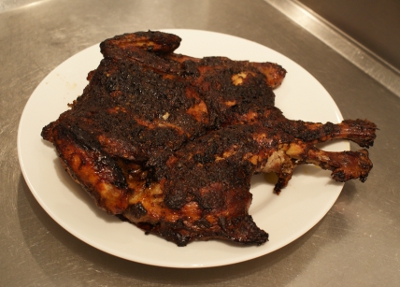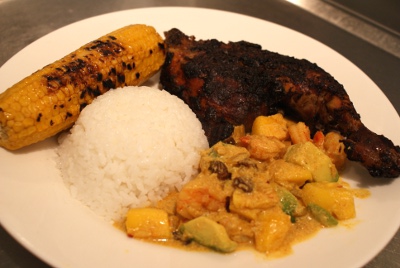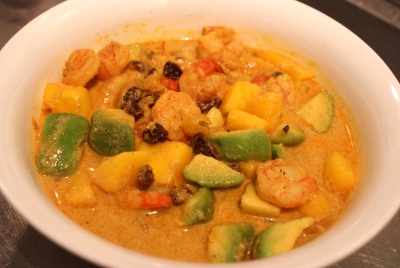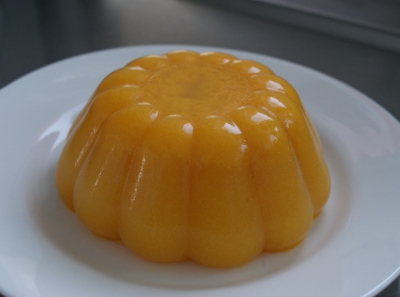Happy New Year everyone!
I have been looking for a decent 30cm stainless steel frying pan for some time and finally came across this Cuisinart example in the Christmas sales, $130 down to $78! Thank you jesus, you truly are a blessing for all mankind.
What could be better, in the one of the hottest and muggiest summers I can remember, than a classic and fiery Goan fish curry, the signature dish of Goa and one of the best traditional fish curries India has to offer, it's a little cracker.
The recipe is from the fantastic "50 Great Curries of India" put together by Camellia Panjabi, a book that is in constant use at our place and one I cannot recommend highly enough.
 Goa Fish Curry
Goa Fish Curry800g fish cut into large pieces (we used blue nose, a good meaty fish that will hold together)
Juice of 1/2 a lime (we used a whole lime)
3/4 teaspoon of turmeric powder
Salt
8 red chillis, dried Kashmiri type
100g fresh coconut (this was very difficult (impossible) to smoothly blend into the curry paste, next time I make this curry I will try using about 1/4 of a cup of coconut cream instead)
3 teaspoons of coriander seeds
2 small onions, one chopped, one finely sliced
1 teaspoon of cumin seeds
1 1/2 teaspoons of chopped garlic
1 1/2 teaspoons of tamarind pulp
2 tablespoons of oil
1 tomato very finely chopped (we used two tomatoes)
3 green chillis, slit lengthways (we finely sliced them)
A few okra (these are optional, we did not use them)
1. Marinate the fish in a mixture of the lime juice, a little of the turmeric powder, a pinch of salt and a little water for about 30 minutes then rinse.
2. Soak the red chillis in 200ml warm water for 15 minutes, strain and reserve the soaking water. In a blender or food processor grind the soaked red chillis, coconut, coriander seeds, chopped onion, cumin seeds, the remaining turmeric powder, the garlic and 1 teaspoon of the tamarind pulp to make a really fine, smooth paste. This is traditionally done using a grinding stone and it can be difficult to achieve a smooth paste in a blender/food processor; just do your best, you will probably be processing for 10 minutes or so. Use some of the left over soaking water from the red chillis to facilitate grinding, don't over heat your appliance.
3. Soak the remaining 1/2 teaspoon of tamarind in 100ml of water for 15 minutes, strain and reserve the soaking water.
4. Heat the oil in a wide, shallow pan and fry the sliced onion on a low-medium heat until lightly coloured (about 5-7 minutes).
5. Add the spice paste and saute over a moderate heat for 6-7 minutes, adding a little water if necessary. When the paste is cooked add 800ml of water.
NOTE: This seems an awful lot of water!The original recipe says to add the water and then cook for just 6 minutes before adding the fish but if you do this you will end up with a thin tasteless soup and by the time you reduce it your fish will have completely fallen apart.
The curry is traditionally a fairly thick soupy consistency and very strong in flavour and so I believe 800ml is a printing error. Next time I would use 300ml and I suggest you do the same as it took about an hour to reduce the curry to the point where the flavour and thickness were ok and I could add the fish and serve.
After adding the water, add the tomato, the green chillis and the okra if you are using it, salt to taste and adjust the flavour with the tamarind water if necessary.
When you have the right flavour and consistency add the fish and cook turning once, be very careful not to over cook your fish, it should only take five or so minutes at most. Serve with rice, raita and flat bread and sprinkle with fresh chopped coriander as in the photograph below. Have some nice cold beer on hand and enjoy!
















